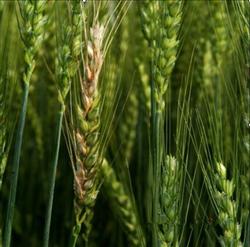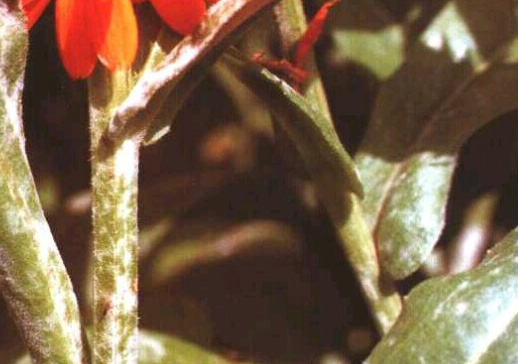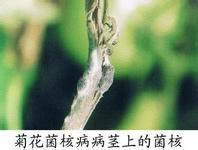ascomycetes Learn more about ascomycetes
-
Ganoderma lucidum disease: Neurospora

Neuropara is also known as Candida albicans, Alternaria alternata, and red bread mold. It belongs to the subphylum ascomycetes, ascomycetes, Chlamydia faecalis, Chlamydia faecalis. The asexual generation is semi-known subphylum, Trichospora, Trichospora, Trichosporaceae, Monilia. The main harmful species is Alternaria alternata (N.sitophilaShearetDodge). 1. The morphological characteristics are that the ascomycetes in the sexual stage are clustered or scattered on the surface or inner layer of the matrix. Mature apothecium dark brown
2019-01-15 -
Control of walnut fleshy fungus in edible fungi

Control of walnut fleshy fungus in edible fungi
2019-06-29 -
What effect does humidity have on wheat scab?

What effect does humidity have on wheat scab? Please introduce the effect of humidity on the occurrence of wheat scab is greater than the effect of temperature. Continuous high humidity for a long time is the primary condition for the disease. Asthecium can only be produced when the soil surface is wet. According to observation, when the relative humidity of the soil surface reaches more than 80%, the asci...
2018-07-19 -
Common diseases and insect pests of Morchella and their preventive methods

Common diseases and insect pests of Morchella and their prevention methods molluscs, including snails and slugs, often grow in dark and damp grass, fallen leaves or under rocks, go out day and night, chew Morchella ascomycetes, and do serious harm. The prevention of this kind of pest.
2018-05-26 -
Blight of garlic leaves

Leaf blight is an important disease of green garlic. When it is serious, it causes the whole leaf to die and affects the yield. First, symptom identification of the disease is mainly harmful to leaves and pedicels. Most of the leaves were killed, starting from the tip of the leaf, gradually developing to the base of the leaf, and spreading from the bottom to the upper. Pale small round spots appear at first, and then expand into oval or irregular gray-white or grayish-brown spots, the disease has black mildew, in severe cases. The whole leaf withered. When the pedicel is killed, it is easy to break from the disease. finally, there are many small black spots scattered on the disease spot.
2019-01-16 -
Powdery mildew of medicinal plant honeysuckle (honeysuckle)

The scientific name of honeysuckle LonicerajaponicaThunb. Alias honeysuckle. Belongs to perennial rattan shrub of honeysuckle family. Used in medicine with buds or flowers to bloom. Leaves and branches can also be used as medicine. It has the effect of clearing away heat and detoxification. Since the 1960s, it has changed from wild to domestic species, and now it has been planted in many cities and counties from south to north, with an once large area. The main symptoms are damage to leaves and sometimes to stems and flowers. The disease spot on the leaf was a small white spot at first, and then expanded into a white powdery spot. In the later stage, the whole leaf was covered with a layer of powdery powder, which was serious.
2019-01-16 -
Control measures of truffle disease of Pleurotus ostreatus

(1) the symptom of the disease is similar to that of Pleurotus ostreatus hyphae, which is indistinguishable to the naked eye; it can go deep into the substrate, compete with Pleurotus ostreatus hyphae for nutrition, water and bottom-up space, and inhibit the ability of Pleurotus ostreatus to produce mushrooms. Its physiologically mature mycelium forms ascomycetes on the mushroom surface of the culture material, especially in the area around the fungus column in contact with the soil during border planting; the ascomycetes in groups or aggregates are brain-shaped wrinkles in shape, very similar to walnut kernels removed from astringent skin, wrinkled and not stretched; at the beginning, most mushroom farmers mistakenly think that Pleurotus ostreatus is budding.
2019-01-16 -
Control measures of wheat scab

Control measures of wheat scab
2018-07-01 -
Control methods of anthracnose of Gardenia jasminoides

[symptoms] the disease mainly damages the leaves of Gardenia jasminoides. From the leaf tip, leaf edge began to occur, the formation of irregular or nearly round brown spots. Sometimes the whole leaf turns brown, causing the branch to wither or the whole plant to die. Most of the diseases occurred from the lower leaves of the plant. Under wet conditions
2019-03-04 -
Prevention and control of gardenia anthracnose: how to treat gardenia anthracnose? what drugs are used for gardenia anthracnose?

[symptoms] the disease mainly damages the leaves of Gardenia jasminoides. From the leaf tip, leaf edge began to occur, the formation of irregular or nearly round brown spots. Sometimes the whole leaf turns brown, causing the branch to wither or the whole plant to die. Most of the diseases occurred from the lower leaves of the plant. Under wet conditions
2019-03-04 -
Disease Ganoderma lucidum yeast

Yeast is a kind of ascomycetes without filamentous mycelium structure, which is widely distributed in nature. Ganoderma lucidum, Tremella fuciformis and other edible fungi can pollute the culture medium and culture materials in the production and cultivation process, mainly polluting the culture materials, leading to the deterioration of the culture materials and inhibiting the growth of hyphae. The infection of symptomatic yeast usually starts from the middle of Tremella culture material, which leads to fermentation deterioration and the smell of alcoholic acid, which affects the growth and development of hyphae, and then affects its yield and quality. The pathogen belongs to ascomycetes subphylum fungi.
2019-01-15 -
What is prochloraz?

What type of fungicide is prochloraz? What diseases can prochloraz fungicide control? What are the effects of prochloraz fungicides? The following farming help planting network is briefly introduced for netizens' reference. Prochloraz is a broad-spectrum fungicide, which is effective against diseases caused by ascomycetes and half-known bacteria in many crops.
2018-07-11 -
How to control powdery mildew of Calendula

Harmful plant: calendula (calendulaofeinalisl.). Distribution and damage: the disease is common in Hebei, Liaoning, Yunnan and other places, and the damage is serious. Symptoms: after the leaves and stems were infected, the leaves showed a powdery round spot of 0.5 mm to 1.2 mm.
2018-12-18 -
Control methods of Sclerotinia sclerotiorum in Chrysanthemum

First, the symptoms of damage: waterlogged disease spots appeared in the middle and lower part of the stem at first, and then turned gray; under humid conditions, the disease part was soft rot, superficial white mildew layer, and in the later stage, the cortex of the diseased stem was moldy and fissured, and there were mouse dung-like black sclerotia in the endophy. sometimes sclerotia are also produced on the stem surface. Second, the morphological characteristics of pathogens: the pathogen is ascus.
2018-09-09 -
Prevention and control of blight of Castanea mollissima

Chestnut blight, also known as chestnut dry blight and canker, is a worldwide disease. Seedlings and fruiting trees can be infected, the light ones lead to the decrease of afforestation survival rate and the amount of fruit, the heavy ones lead to the failure of afforestation or the failure of the whole chestnut forest. Xitaoyuan Forest Farm in Mingguang City
2020-11-08 Species chestnut plague disease control blight also known as blight -
spruce blight

[Distribution and harm] The disease occurred in Songhua River area and Yichun forest area of Heilongjiang Province, damaging Picea koraiensis 16~21-year-old plantation. In the damaged stand, the young trees of Abiesnephrolepis and Pinus koraiensis, which were naturally regenerated, were also infected. A felt hyphae layer grows on branches and leaves, causing wilting and felting. Spread upward from the lower part of the canopy and taper along the trunk.
2019-01-16 -
Is the latest Morchella really toxic?

Morchella is the most famous delicious edible fungus in ascomycetes, also known as Tricholoma mushroom, Aspergillus oryzae, Morchella, etc., is a fungus of the genus Morchella of the family Saddleaceae, with a small or medium fruiting body, similar to the structure of Ascomycetes, and a pleated network in the upper part, both like a beehive and like a tripe.
2020-11-10 The latest sheep tripe bacteria really toxic Mo yes daughter pouch -
needle drop disease of Korean pine

Needle drop disease of Pinus koraiensis is a common disease worldwide. The disease can infect from young trees to big trees, causing early defoliation, affecting growth and causing the death of diseased plants. Symptoms: The disease usually affects 2-year-old needles, and some 1-year-old needles can also be affected. At the beginning of the disease, small yellow spots or segmental spots were produced on the infected needles, and the whole leaves turned yellow and fell off in late autumn. In the spring of the following year, large, black or gray, long oval or elliptical protruding grains appeared on the infected needles, with paint luster and a longitudinal crack in the center, which were asci disks of pathogenic fungi. Some diseased leaves
2019-01-15 -
Causes and control countermeasures of sclerotia in soybean

The main results were as follows: 1. The symptom field showed that the upper leaves of the plant became brown and died first, and the stem of the diseased plant continued to develop brown disease spots, resulting in white cotton flocculent mycelium and white particles, and then turned black to become sclerotia. In the stem of the longitudinal dissection plant, there were black cylindrical sclerotia arranged in turn. The diseased plant is gray-white after death, the hollow cortex of the stem is often rotten into hemp silk, and the sclerotia outside the diseased plant is easy to fall off. The disease spot on the pod is brown, it dies quickly and cannot bear fruit, and finally the whole pod is pale. Although the mildly diseased pod can be grained, the diseased grain is rotten or.
2019-01-16 -
Integrated control of Sclerotinia sclerotiorum in coriander

Coriander, formerly known as coriander, alias: coriander, coriander, Latin name: Coriandrum sativum L. Annual or biennial strongly scented herbs of the family Umbelliferae and coriander, 20-100 cm tall. The root is fusiform, slender, with many slender branches. Columnar stem
2020-11-08 Coriander Sclerotinia sclerotiorum disease integrated control coriander original name
